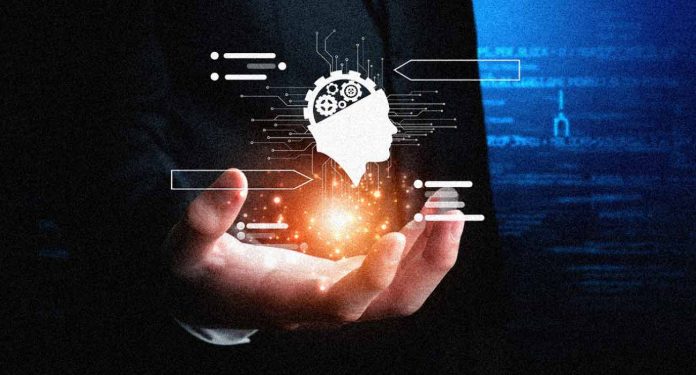From personalization to predictive insights, AI is redefining how companies adapt, compete, and build trust in a fast-changing business landscape.
The pace of change in business has never been faster. Customers expect more choices, employees want greater flexibility, and shareholders demand growth under increasingly volatile conditions. To remain competitive, companies are reshaping their operations, strategies, and offerings in ways that were unimaginable only a few years ago. At the center of this transformation is artificial intelligence.
No longer a speculative concept or a distant promise, AI is emerging as a practical and essential tool for decision-making, efficiency, and innovation. It is not simply a matter of adding another software system to the stack. Companies need to redefine how organizations and their demands operate, how they interact with stakeholders, and how they design for the future.
Meeting the expectations of modern customers has proven to be one of the most pressing drivers of change. Buyers today want more than convenience; they want personalization, speed, and transparency in every interaction. They expect companies to know their preferences, anticipate their needs, and deliver with minimal friction. Static offerings, once sufficient, no longer resonate in an environment where consumers are accustomed to highly tailored experiences in their digital lives.
Also Read: The Future of Targeting Isn’t Audience or Contextual. It’s Quality.
Businesses are responding by deploying AI systems that analyze patterns in behavior, segment audiences with unprecedented precision, and generate real-time insights that guide both marketing strategies and operational adjustments. Retailers can now create truly individualized shopping experiences, financial institutions can proactively recommend better options for customers, and healthcare providers can anticipate patient needs before they arise. The unifying thread is that companies are not relying on guesswork; they are continuously learning and adapting through data, allowing them to anticipate demand rather than merely react to it.
This transformation is not confined to the marketplace. Within organizations, employees are seeking the same level of modernization. They want tools that reduce repetitive work and allow them to focus on the higher-value contributions that matter most. AI-driven automation is becoming the bridge to meet this demand. In many organizations, generative AI is already performing functions such as drafting reports, summarizing meetings, and handling routine customer inquiries. This shift is not about displacing employees. Instead, it is about elevating them. By removing low-value tasks from their workload, companies create space for employees to concentrate on strategic thinking, creative problem-solving, and relationship-building.
Far from diminishing the human role in the workplace, AI has the potential to enhance it, enabling teams to operate at a higher level of efficiency and effectiveness. However, realizing this vision requires deliberate investment in reskilling and upskilling. Employees must be equipped not only to work alongside AI but to supervise, refine, and improve these systems. The companies that are investing in training are ensuring that the uniquely human qualities of judgment, ethics, and creativity remain at the center of innovation.
Also Read: Edition 3: Sharp Minds Decoding Tech’s Next Wave
Beyond customers and employees, the operational backbone of businesses is also undergoing a profound shift. Volatility in supply chains, geopolitical uncertainty, regulatory changes, and environmental challenges have created an environment where agility is no longer optional. AI provides the speed and accuracy necessary to navigate these disruptions.
Manufacturers are utilizing predictive analytics to identify potential supply shortages and switch to alternative suppliers before a crisis arises. Logistics companies are leveraging AI to optimize delivery routes, reduce costs, and lower their environmental footprint. In healthcare, predictive modeling is enabling hospitals and health systems to anticipate demand for resources, from staffing to medications, allowing them to respond with agility rather than scrambling in the moment.
In each of these cases, the advantage AI provides is not abstract. It is measurable in time saved, costs reduced, and risks avoided. Companies that once relied on weeks of manual analysis are now modeling scenarios in real time and making decisions within hours, if not minutes.
Perhaps the most compelling aspect of AI’s role in adaptation is its ability to enable entirely new business models. Organizations are no longer limited to selling products or services in traditional formats. Instead, AI is allowing them to redefine the value proposition altogether. For example, rather than simply selling equipment, firms are offering “uptime as a service,” where AI systems monitor machinery, predict failures, and schedule maintenance before problems arise.
Also Read: Is the Future of Personalization About More Data, or Smarter Data?
This shifts the customer relationship from a transactional exchange to an ongoing partnership centered on outcomes. In industries such as pharmaceuticals, AI is accelerating drug discovery by rapidly analyzing vast datasets to identify promising compounds far more efficiently than conventional research methods. In media and entertainment, AI tools are helping creators design content that is both more engaging and more inclusive, aligning their outputs with the diverse needs of their audience. These examples point to a broader truth: innovation is no longer constrained by human capacity alone. The combination of human creativity and machine intelligence is generating once-unimaginable breakthroughs.
Still, with opportunity comes responsibility. Adapting to these new demands is not solely about technological capability. It is also about building and maintaining trust. Customers, employees, and regulators are watching closely, and they want assurance that AI is being used responsibly. That requires transparency in how AI systems function, fairness in their application, and accountability in monitoring their outcomes.
Companies must invest in governance frameworks that identify and mitigate bias, ensure auditability, and safeguard security. They must also be candid with stakeholders about the limitations of AI, resisting the temptation to oversell its capabilities. Those who treat AI as a black box or pursue short-term gains at the expense of trust will find themselves at risk. Thoughtful leaders understand that the long-term viability of their organizations depends not just on what AI can do, but on how responsibly it is deployed.
For CEOs and business leaders, the challenge is to view AI not as a standalone initiative, but as an integral part of their corporate strategy. This means integrating AI into the core of business planning, aligning it across departments, and measuring success in terms of adaptability and resilience rather than short-term efficiency alone.
Boards are beginning to ask more probing questions about how companies are using AI to safeguard competitiveness. Investors want to see clear strategies that strike a balance between opportunity and governance. Employees look to leadership for clarity about how AI will shape their roles and careers. In this environment, CEOs must bring coherence to the conversation, setting a vision that unites all stakeholders and establishes a clear path forward.
Also Read: The AI-Powered CDP: A New Era for Customer Data Management
Looking ahead, it is clear that we are at a turning point. Companies that adapt quickly to these new demands, empowered by AI, will define the next decade of business. Those who hesitate may find themselves struggling to compete in markets where agility is the ultimate differentiator. AI’s role is not to replace people or strip organizations of their values. Its role is to extend human capability, to bring clarity to complexity, and to help businesses deliver outcomes that are both meaningful and sustainable.
The organizations that recognize this truth are not simply surviving change; they are shaping it. The responsibility of today’s leaders is to thoughtfully embrace these tools, invest in people, and pursue innovation with integrity. Companies that do so will not only thrive in this era of transformation, but they will also set the standard for what the future of business looks like.










